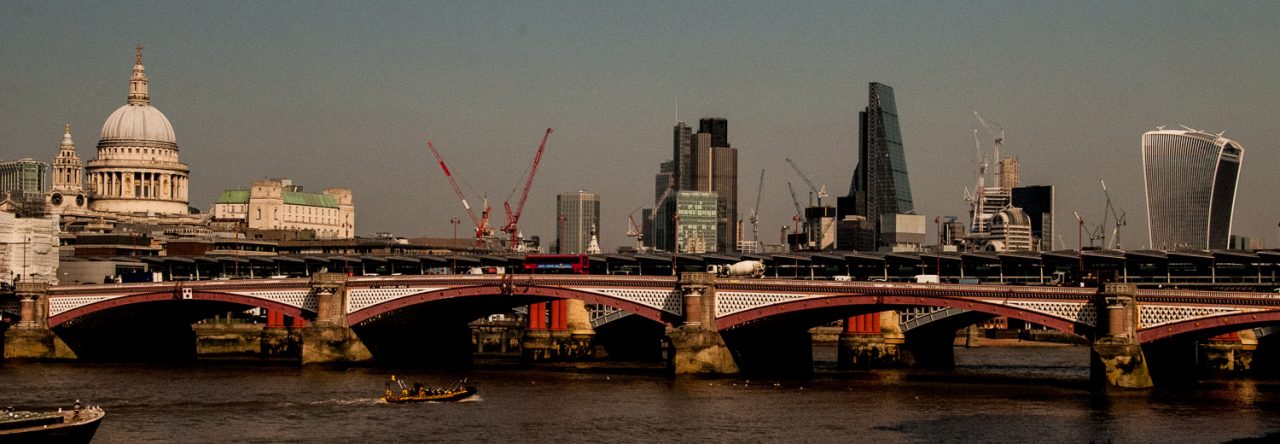The big news is that the Magnolia trees beside St Giles are in bloom – this lasts less than a month so has to be savoured …
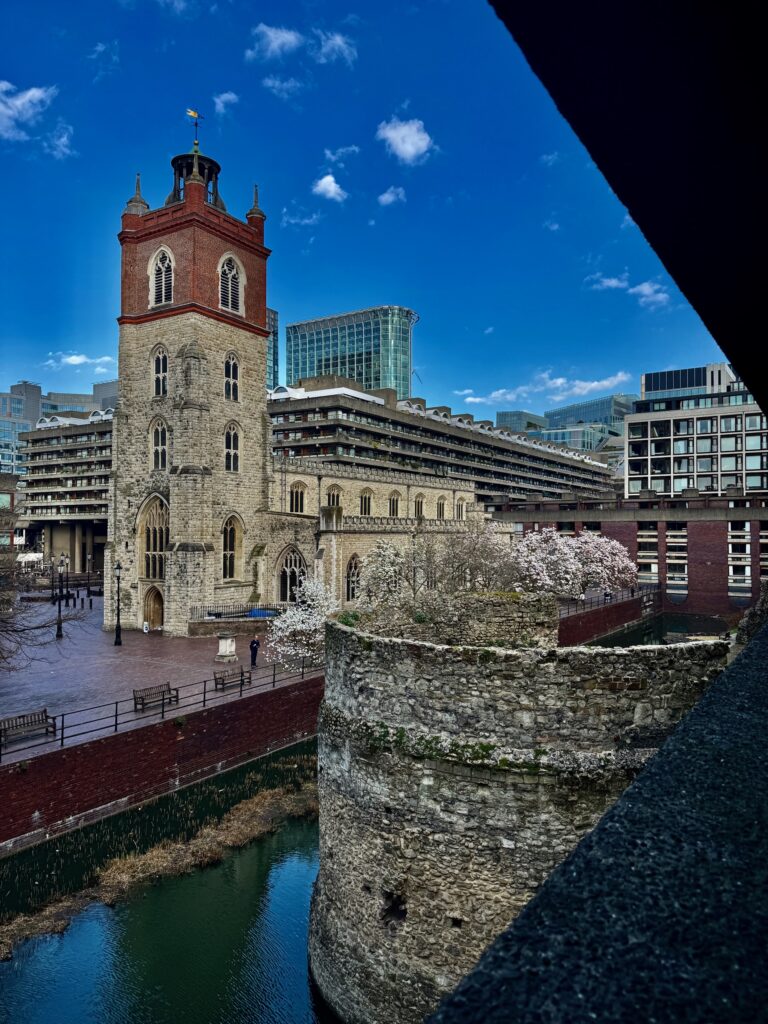
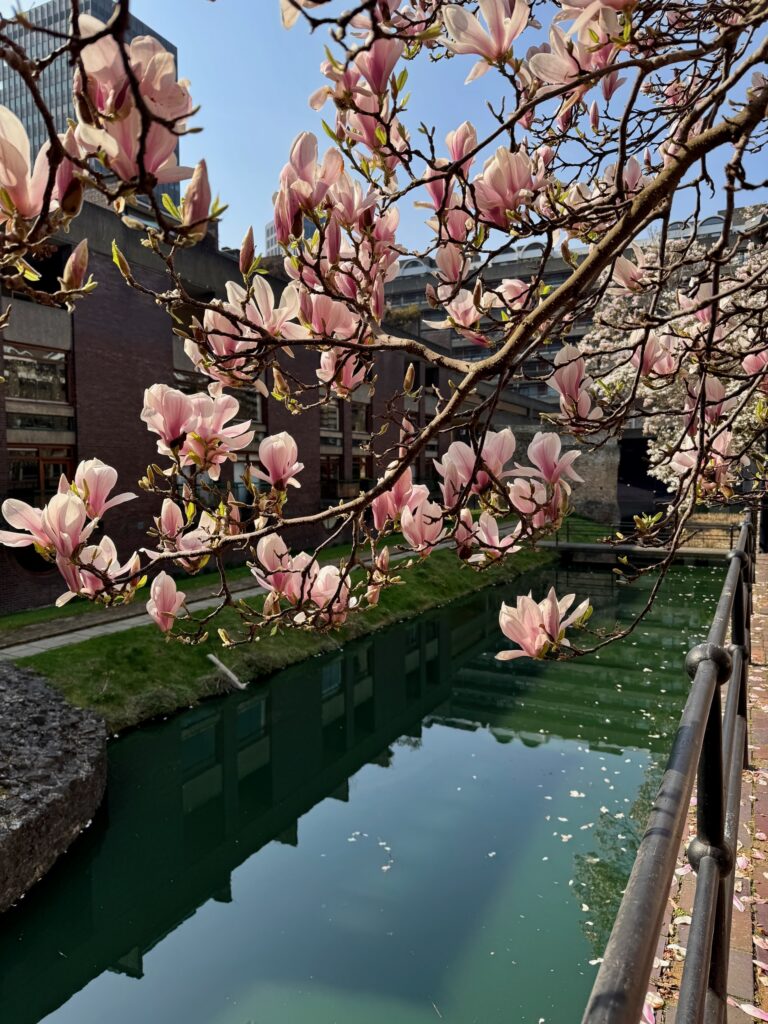
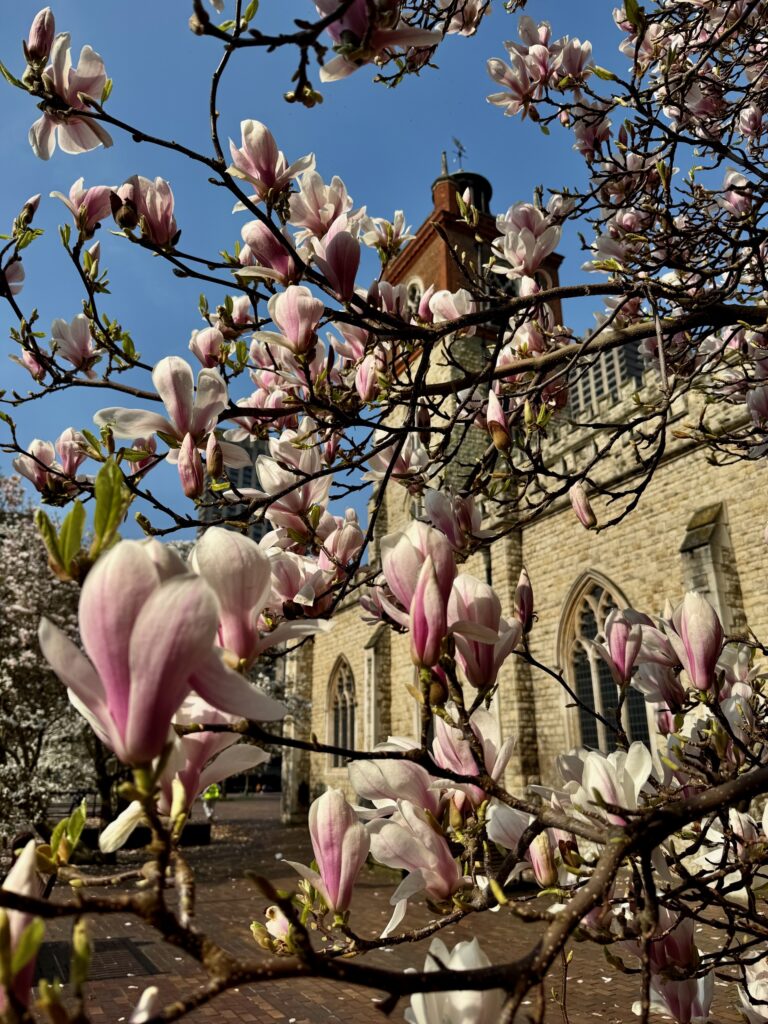
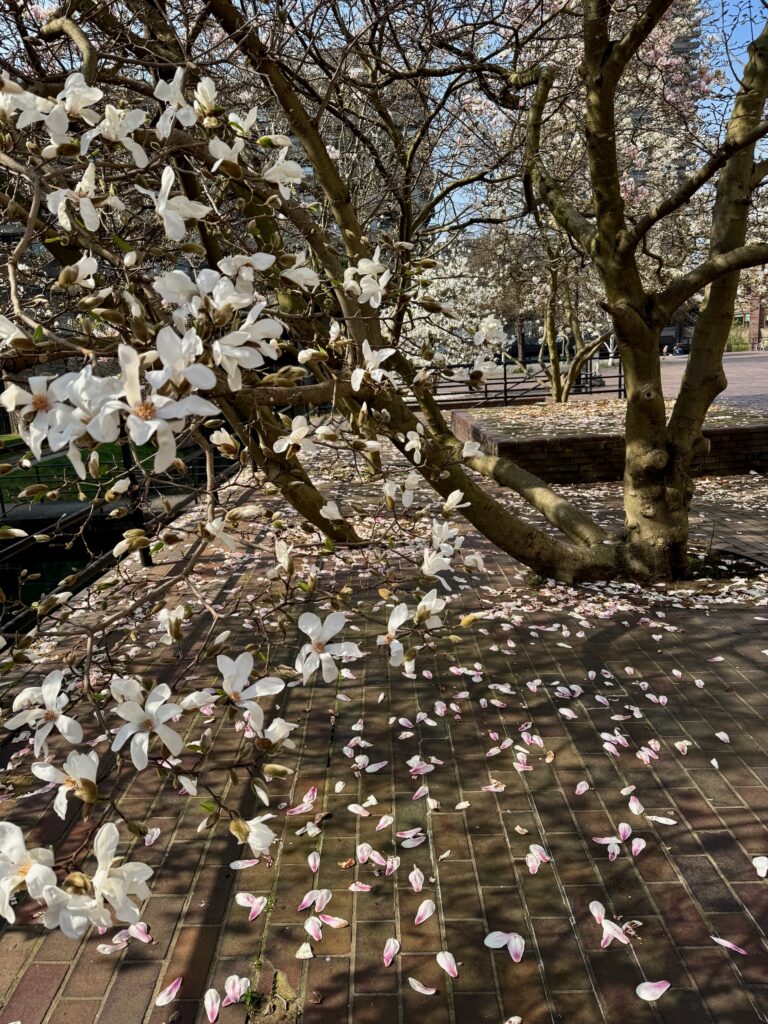
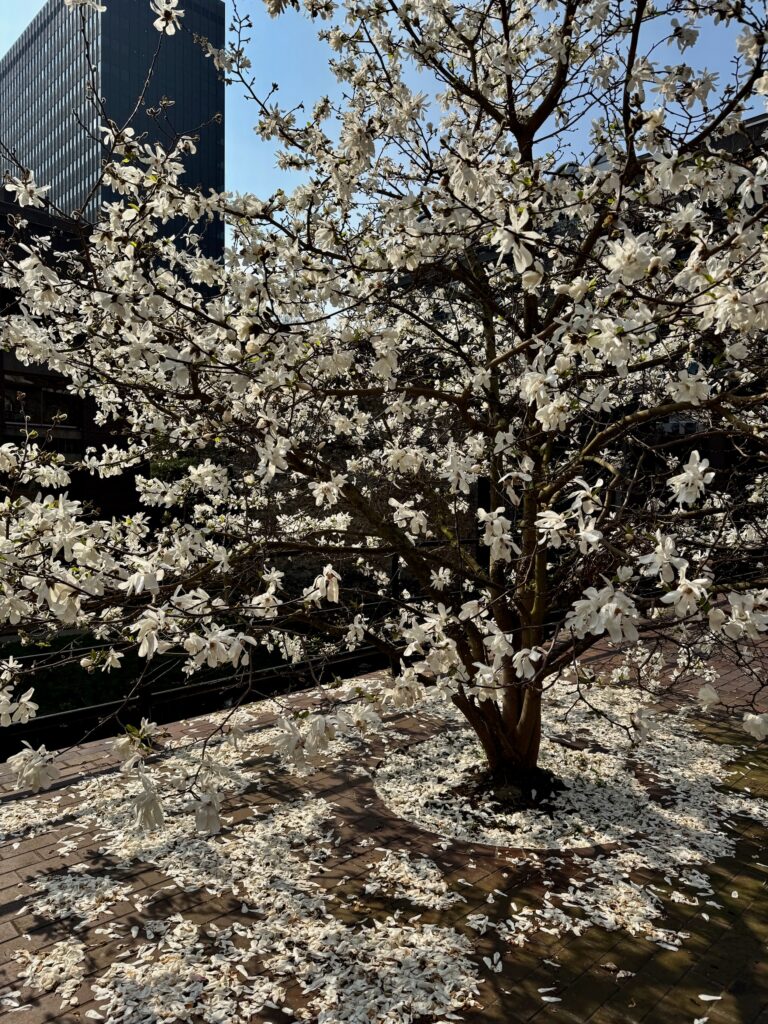
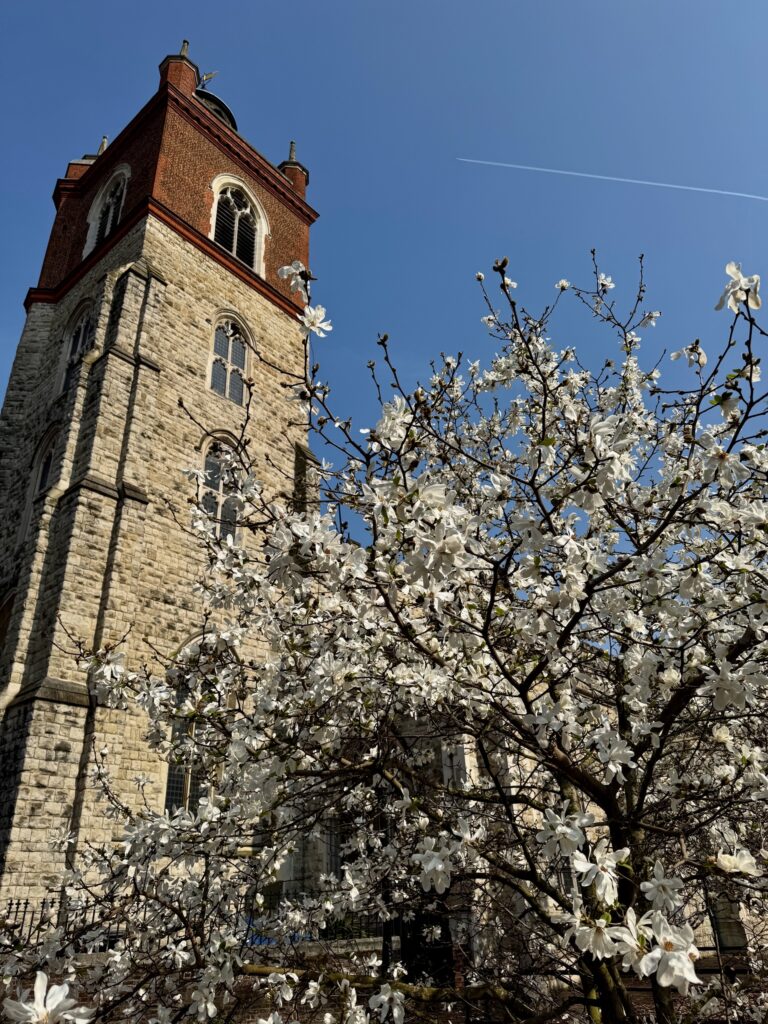
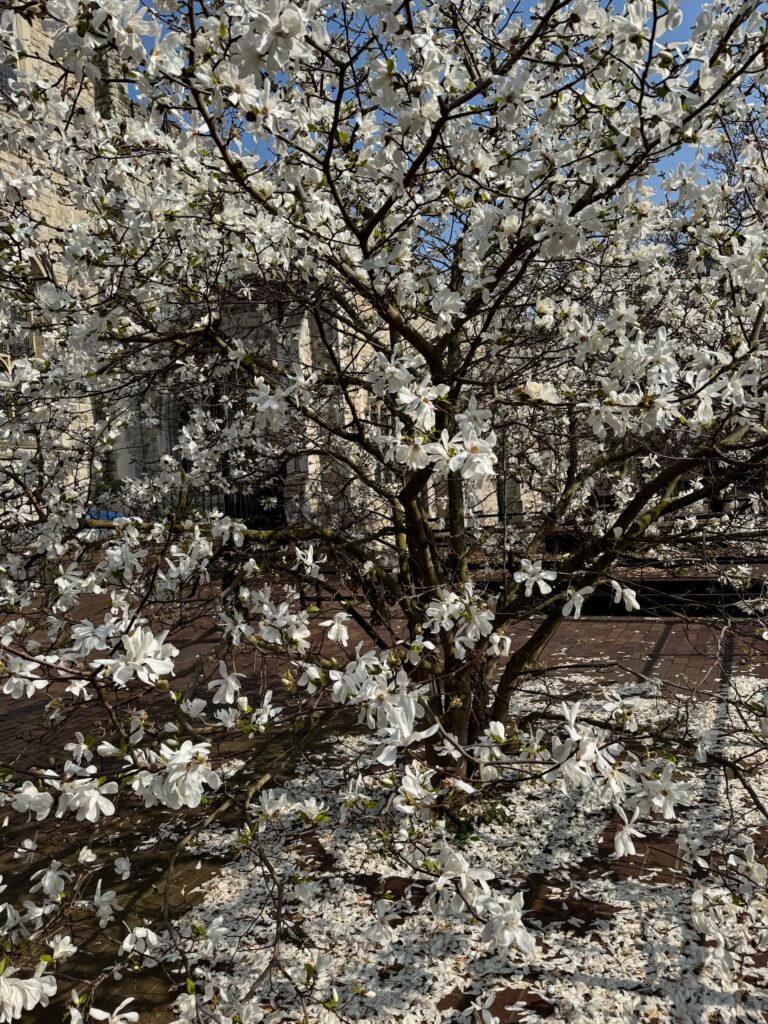
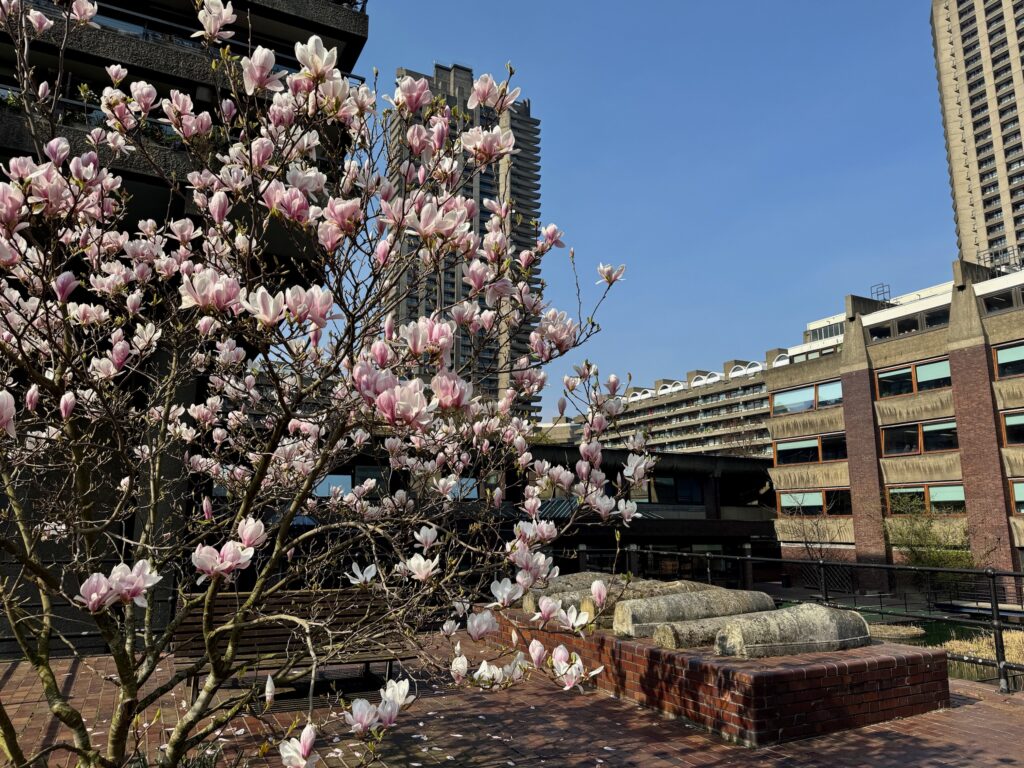
The Silk Street beds are looking good …

Some rogue visitors among the Polyanthus (possibly bulbs from last year) …

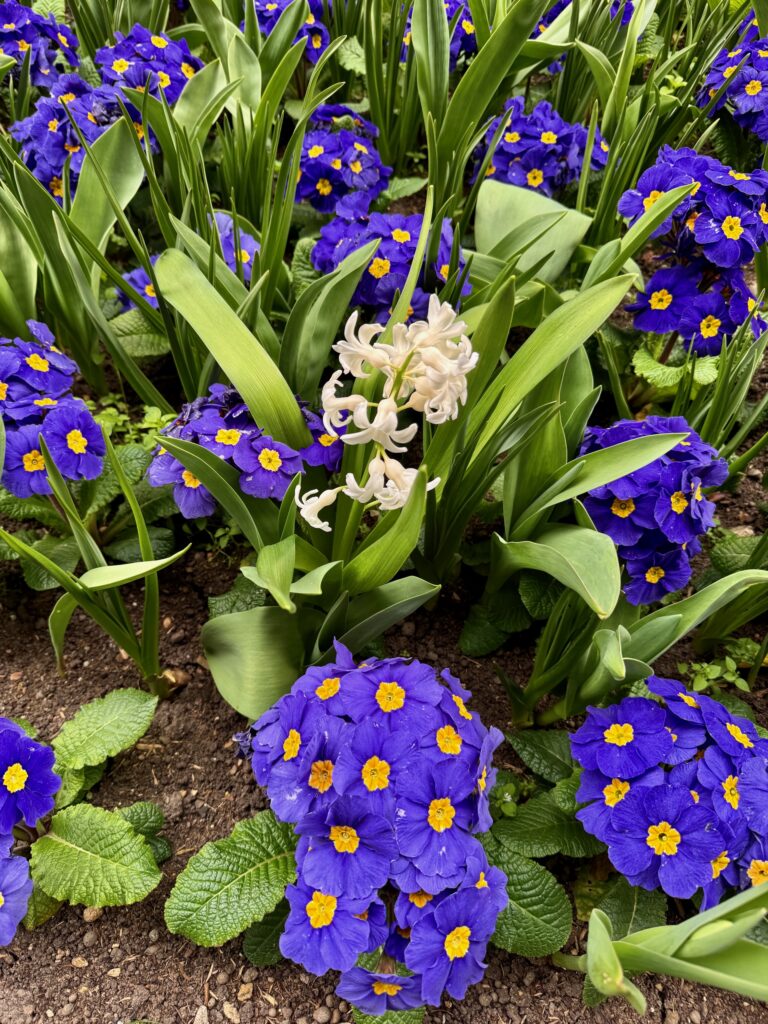
Must be fun to play amongst the daffodils …
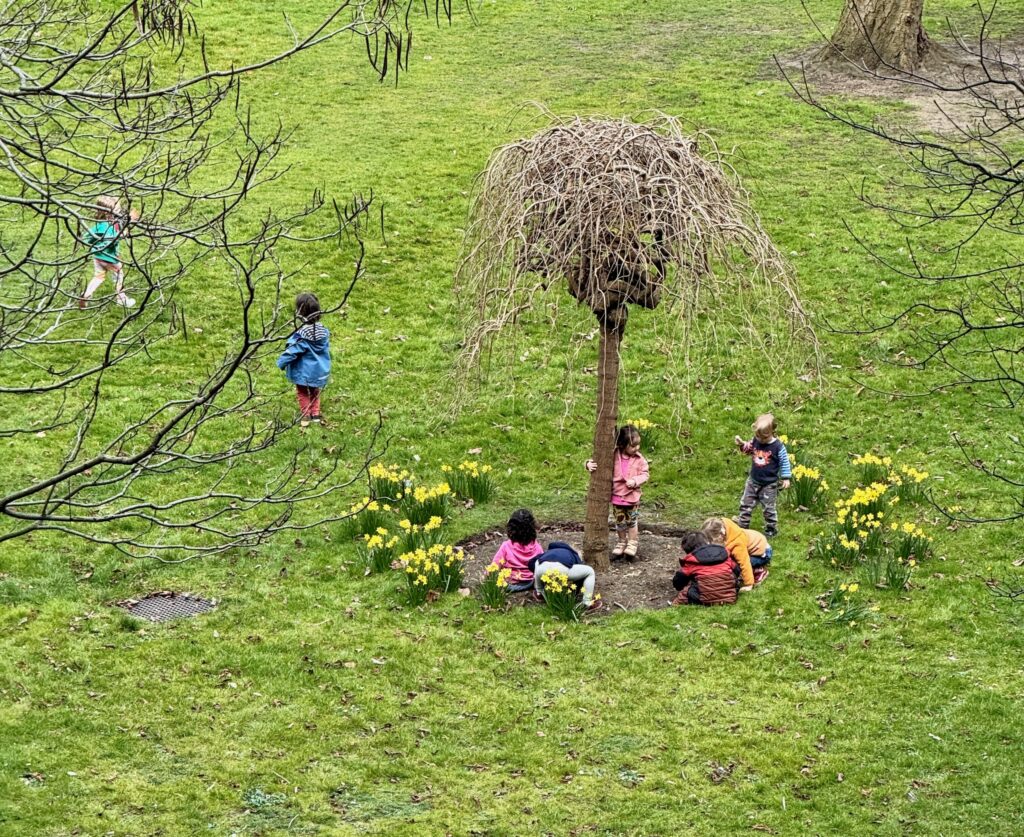
St Giles silhouettes at dusk …
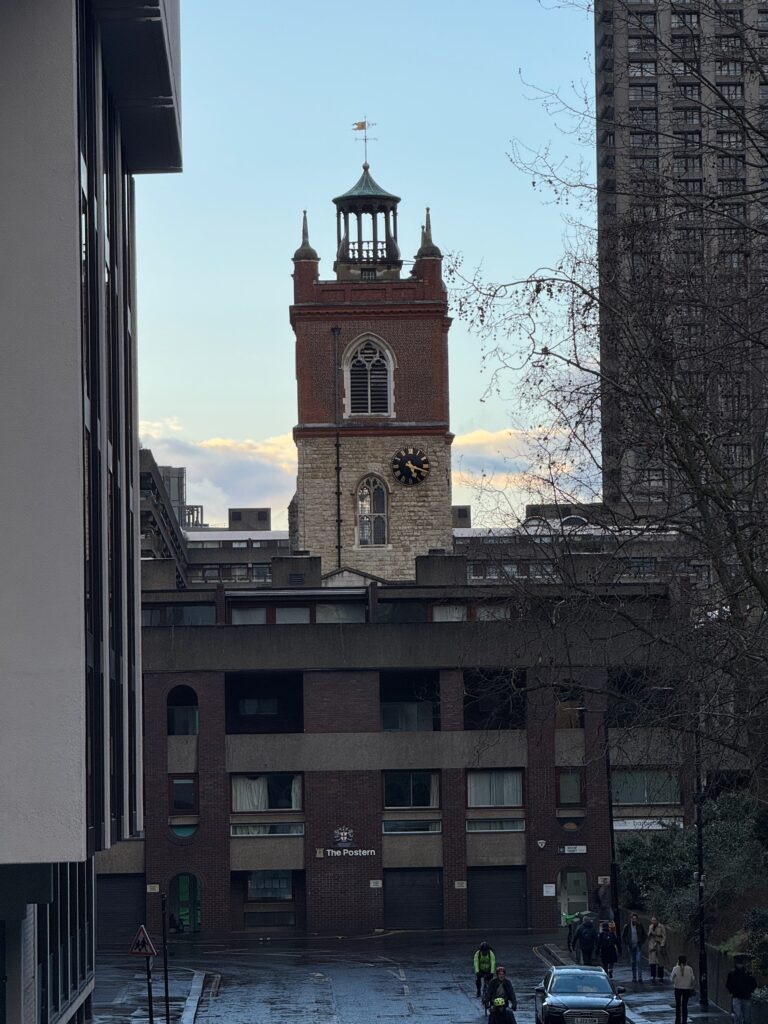
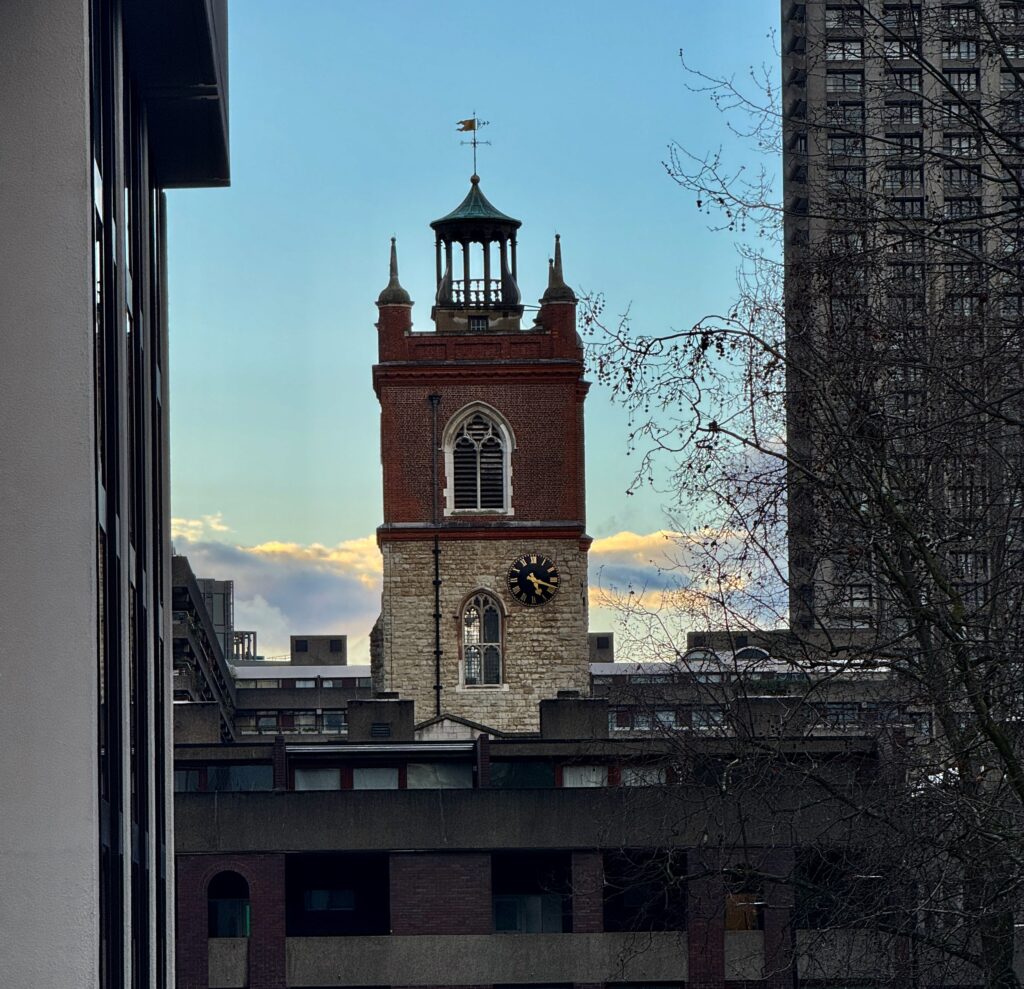
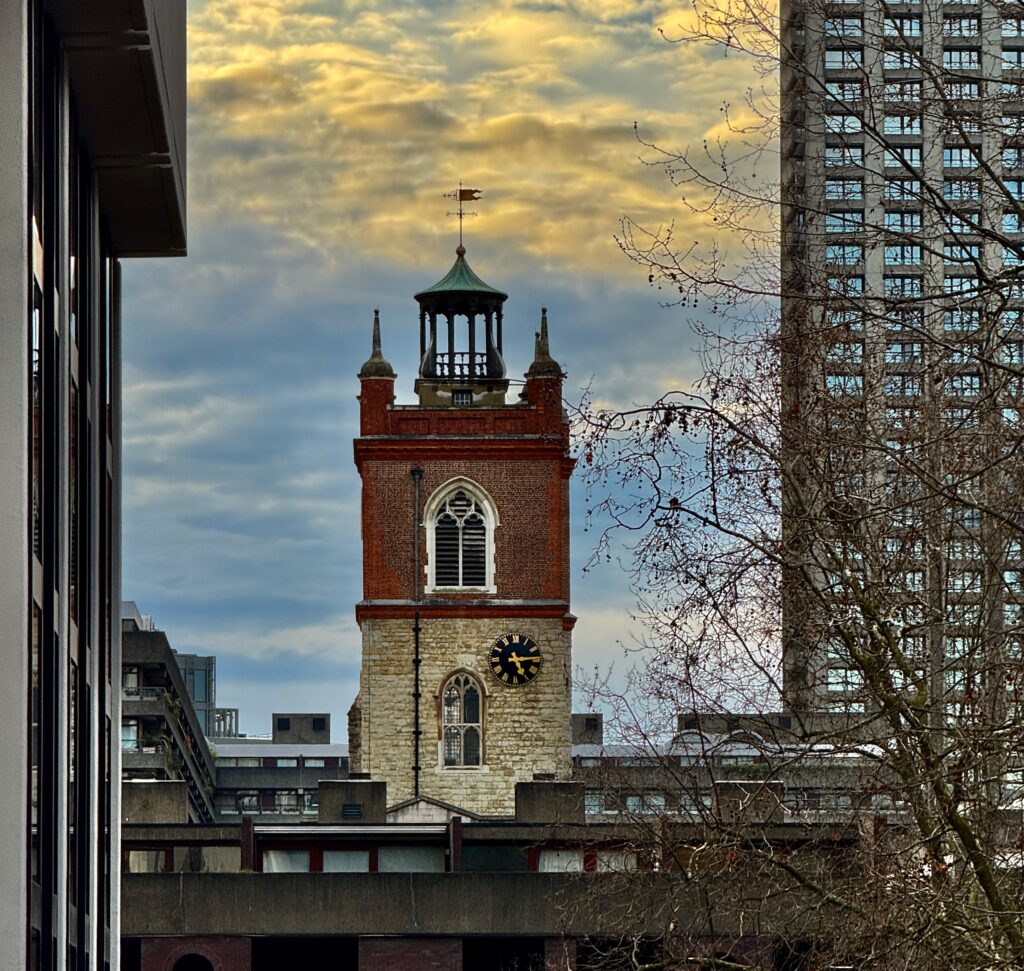
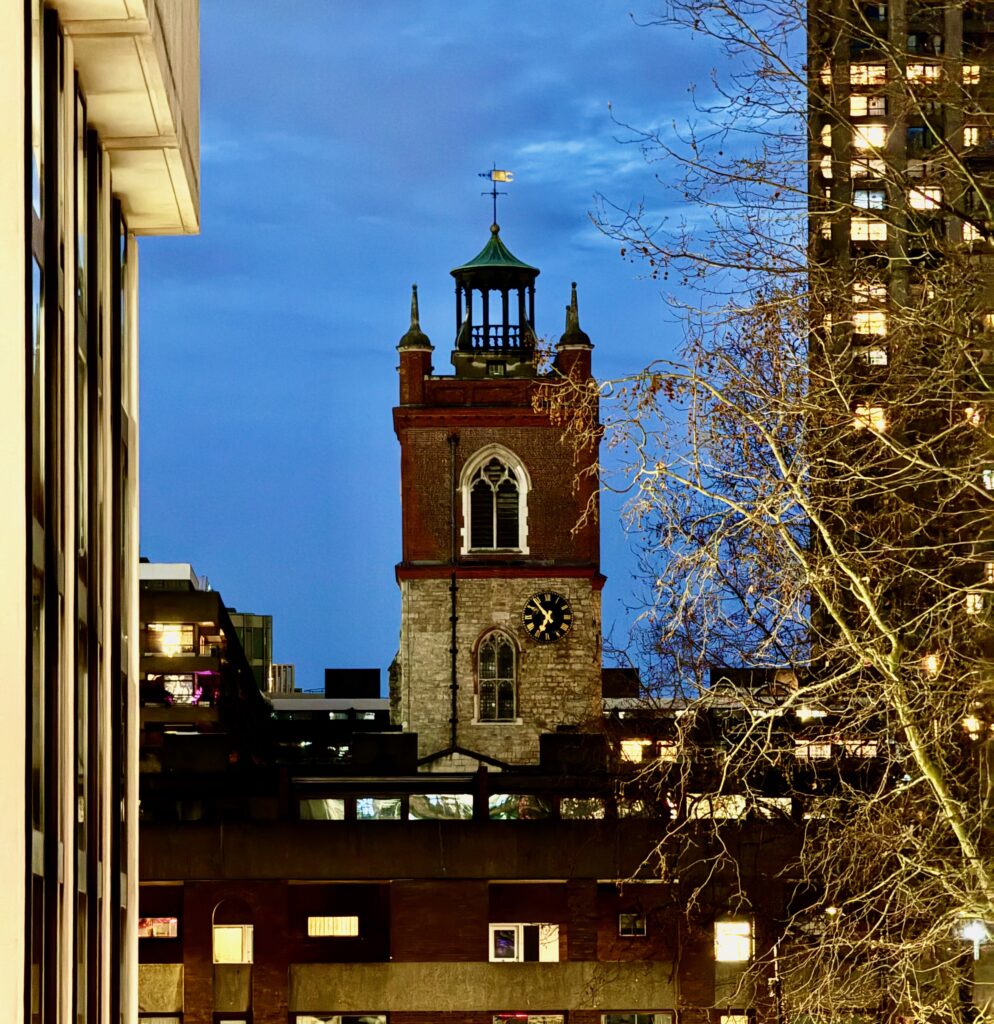
From the St Alphage Highwalk …
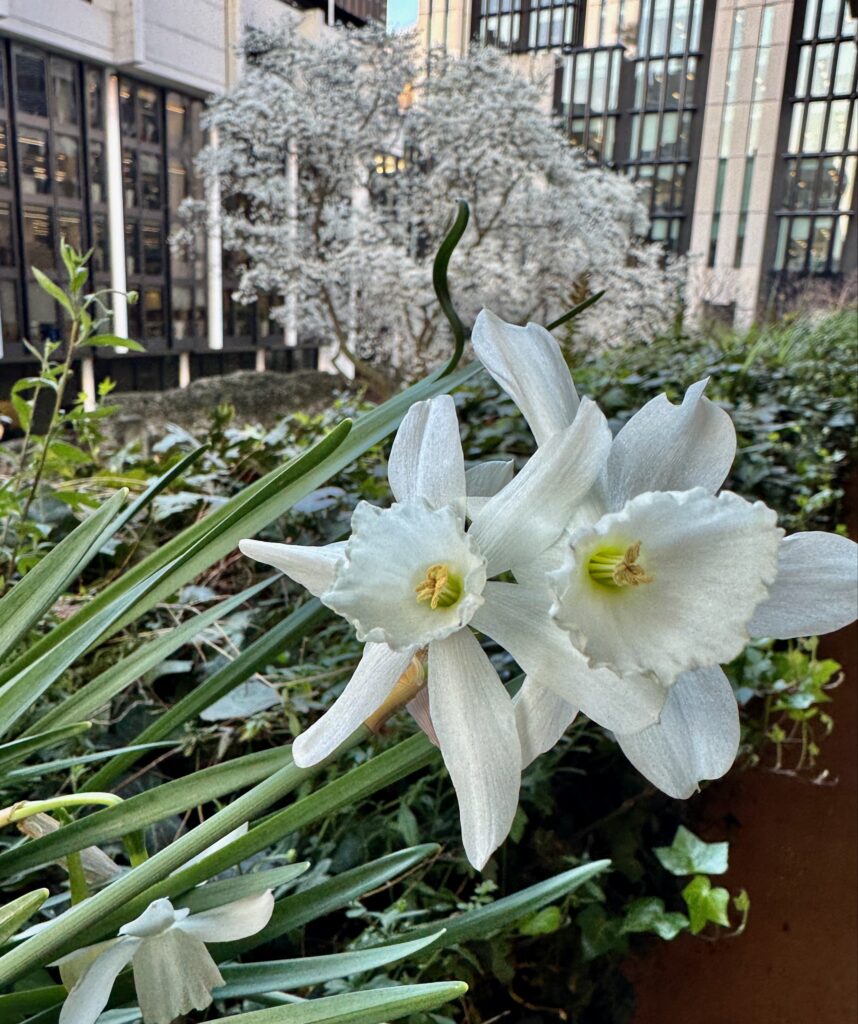
Magnolia Stellata …
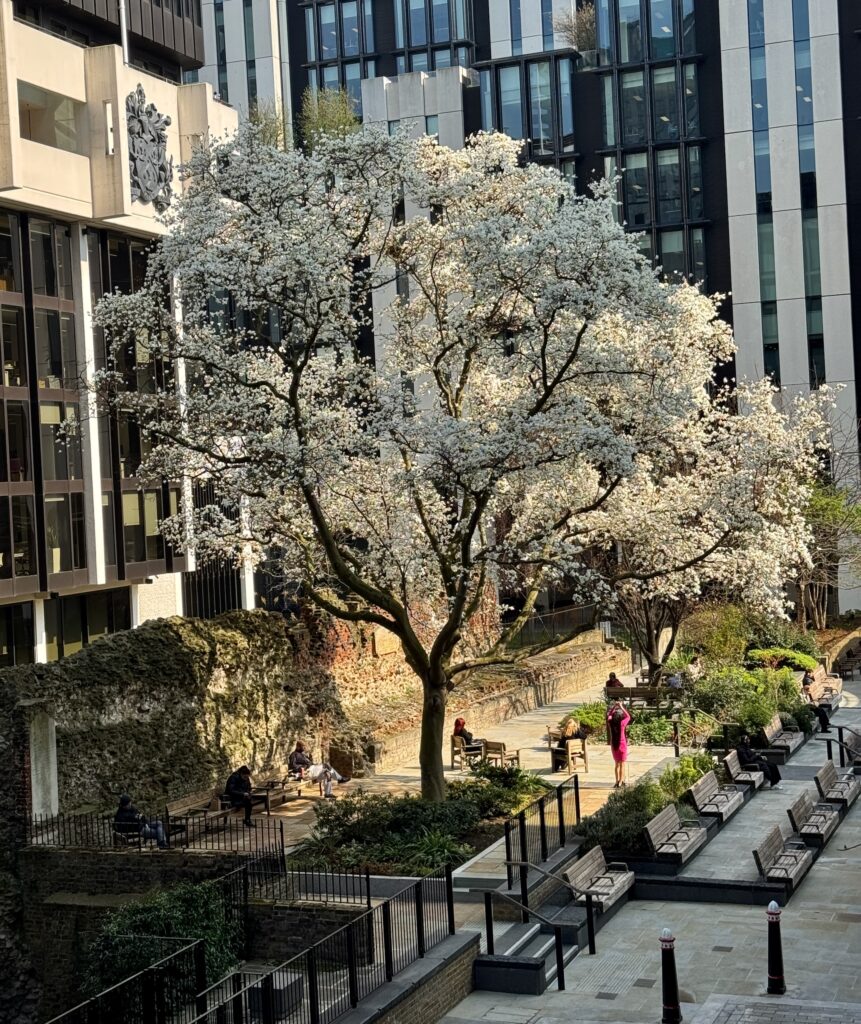
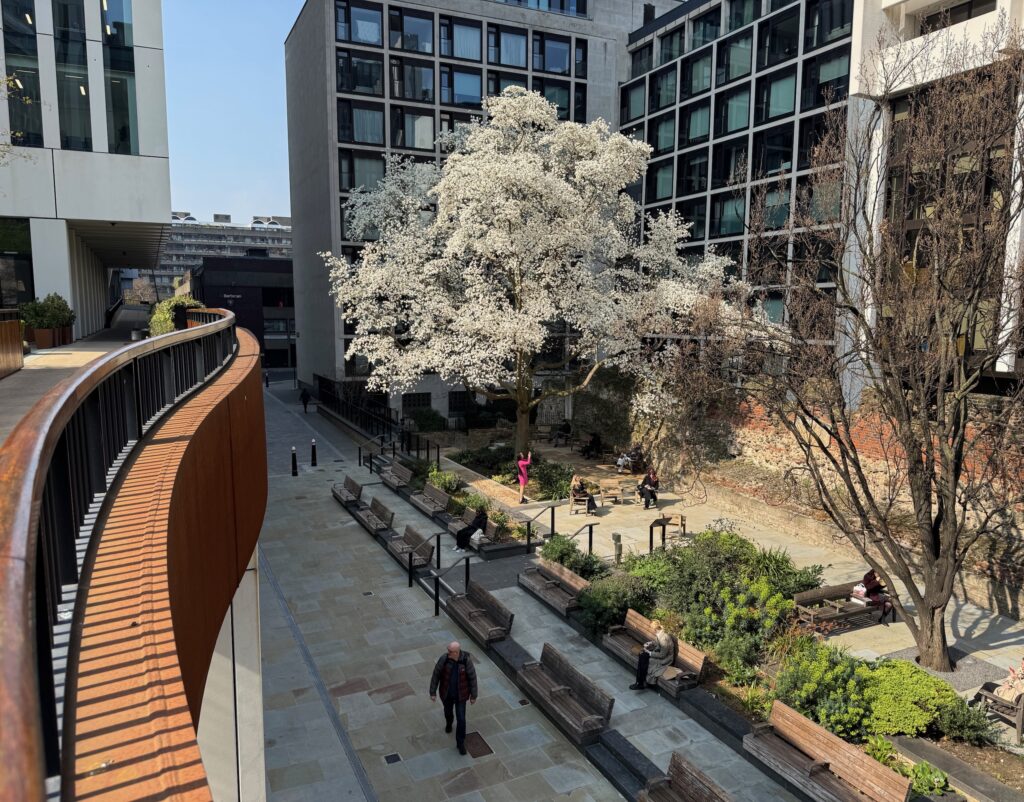

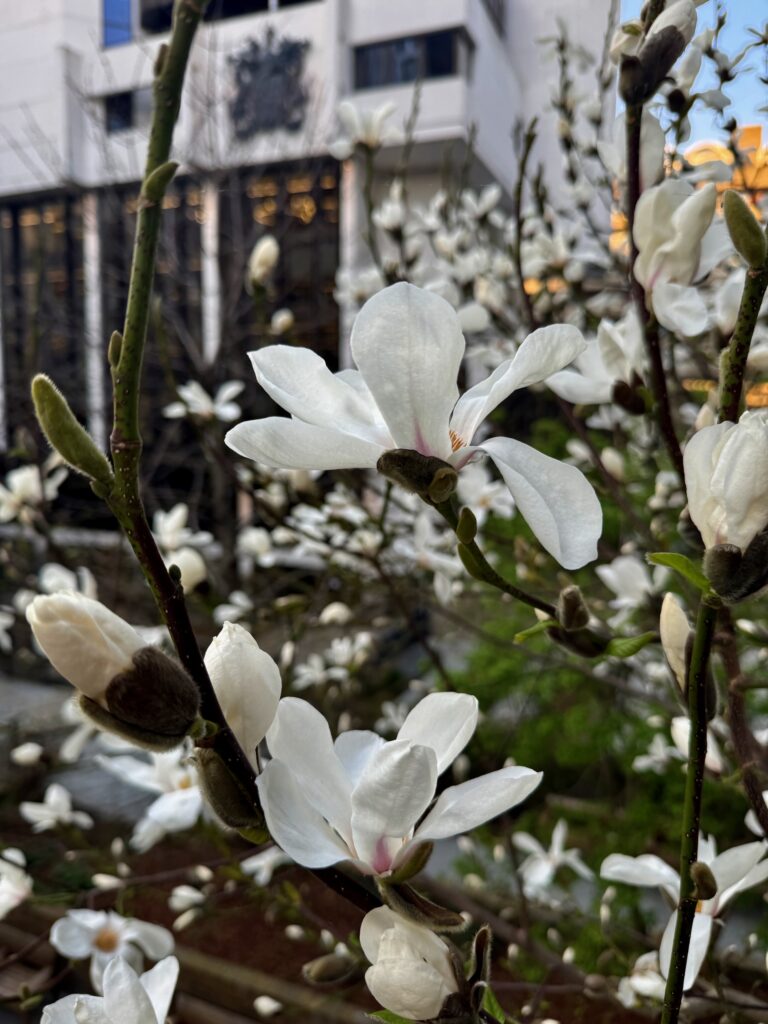
Another highlight of the week was a guided walk around some of the fenced off areas of Bunhill Burial Ground organised by the Friends of City Gardens. The bunting and brochures were out to greet us …
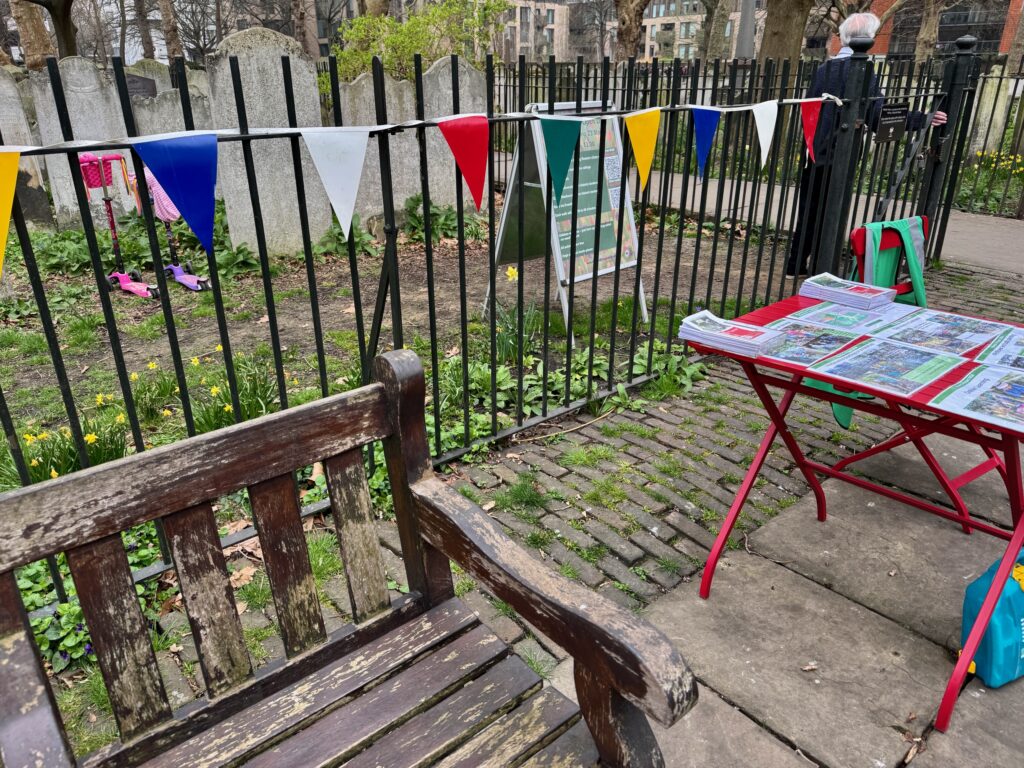
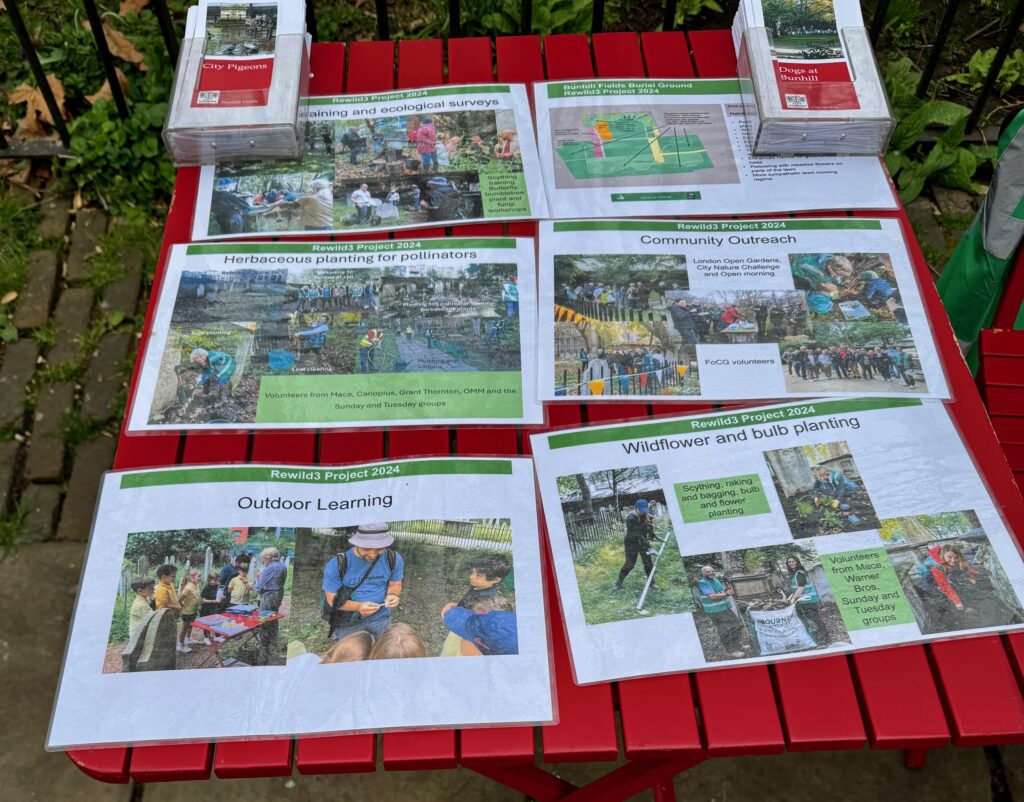
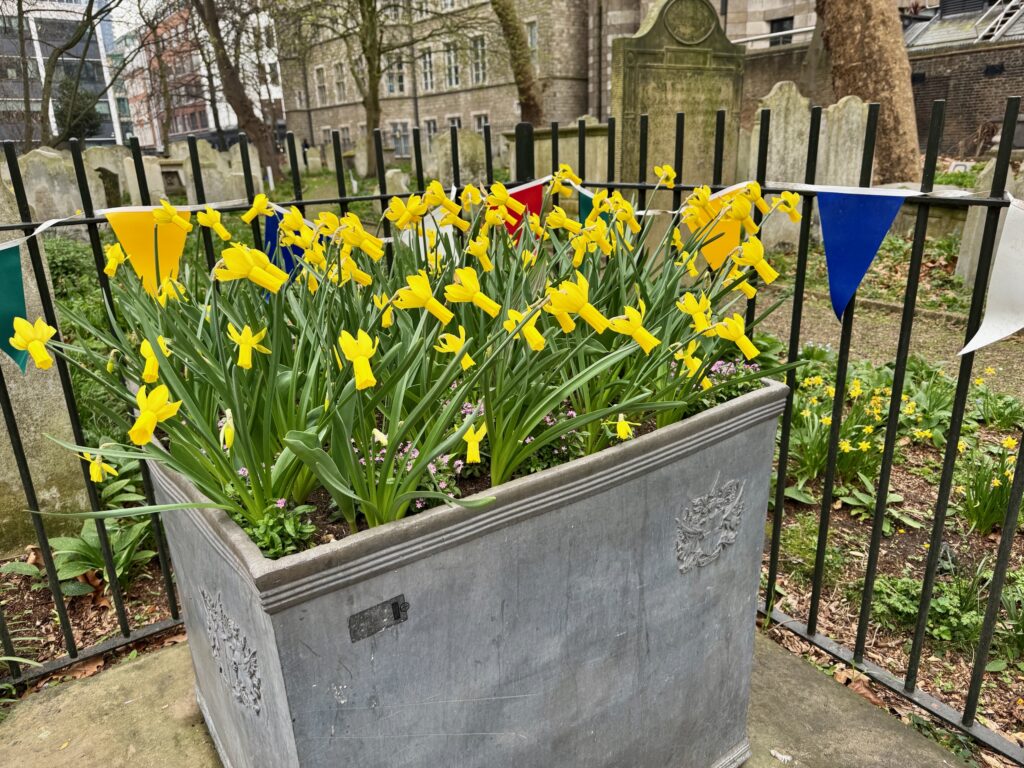
For a detailed history of Bunhill, do have a look at my February 2022 blog. Relevant to our stroll, however, is the Act of Uniformity of 1663. This established the Church of England as the national church and at the same time created a distinct category of Christian believers who wished to remain outside the national church. These became known as the nonconformists or dissenters and Bunhill became for many of them the burial ground of choice due to its location outside the City boundary and its independence from any Established place of worship.
First stop was the earliest grave with a legible inscription, that of Theophilus Gale MA, an eminent dissenter who died in 1678 …
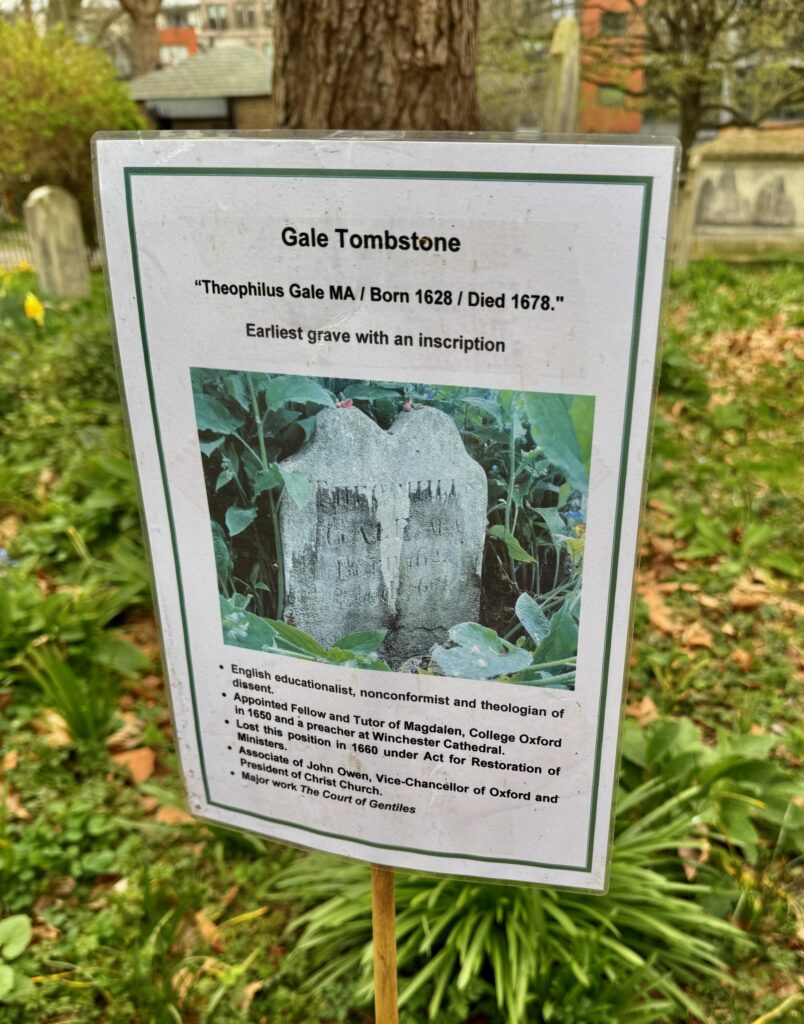
It is rather tucked away …
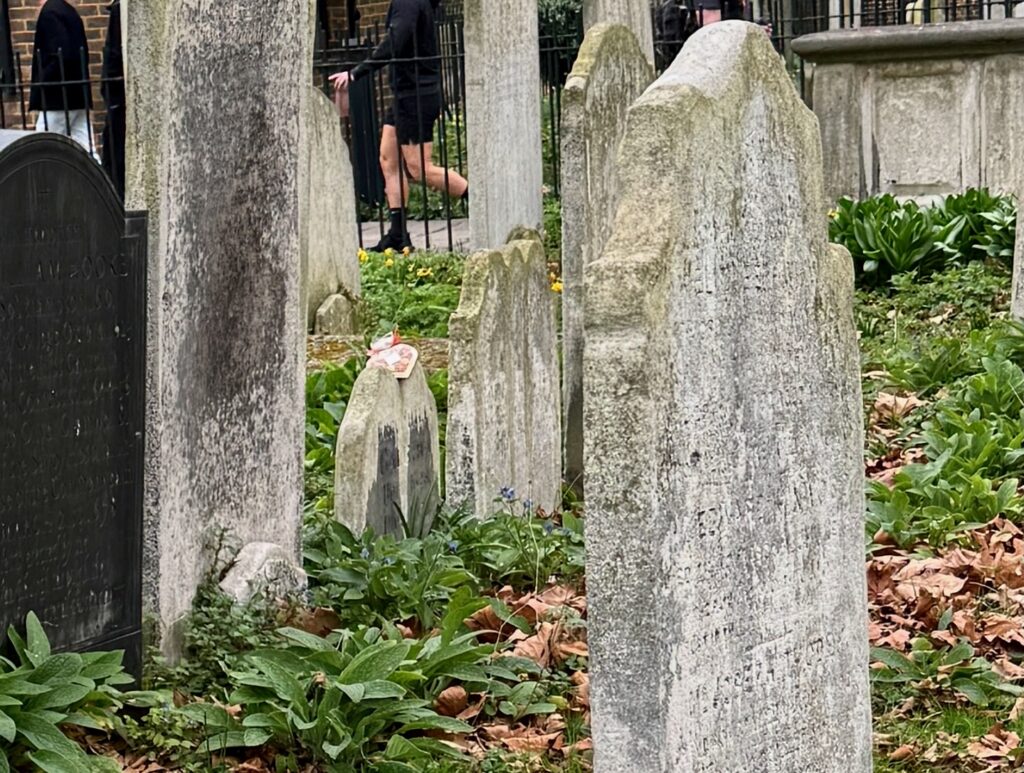
He was a doctor of divinity, a classical scholar and a learned theologian and philosopher. Gale is held in high regard in America’s Harvard University since, when he died, he left his library to the College, more than doubling its collection of books.
This is the impressive chest tomb of theologian John Owen (1618-1683) …
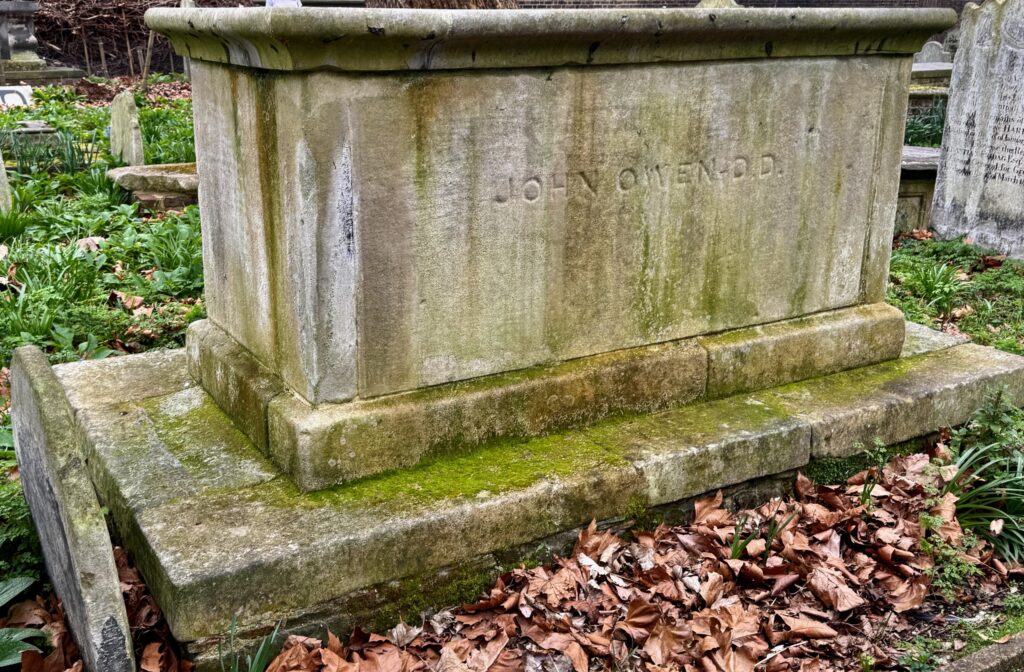
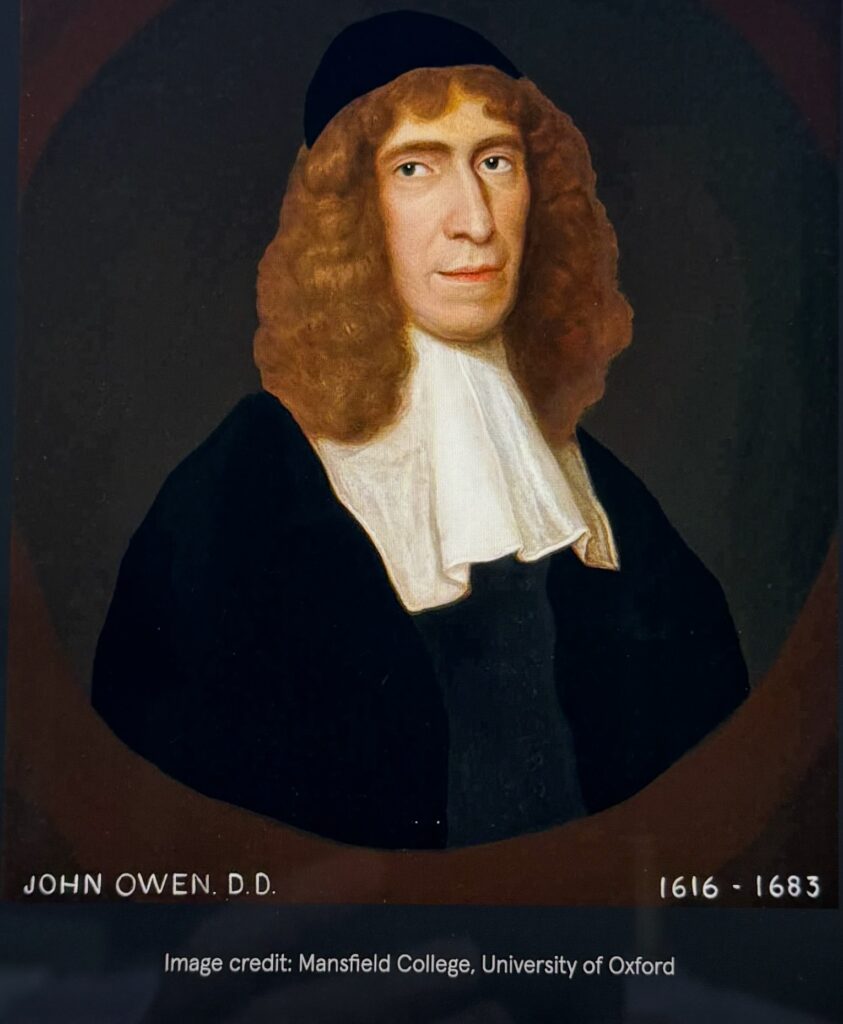
He was a great friend of John Bunyan, author of Pilgrim’s Progress, whose elaborate tomb is nearby …
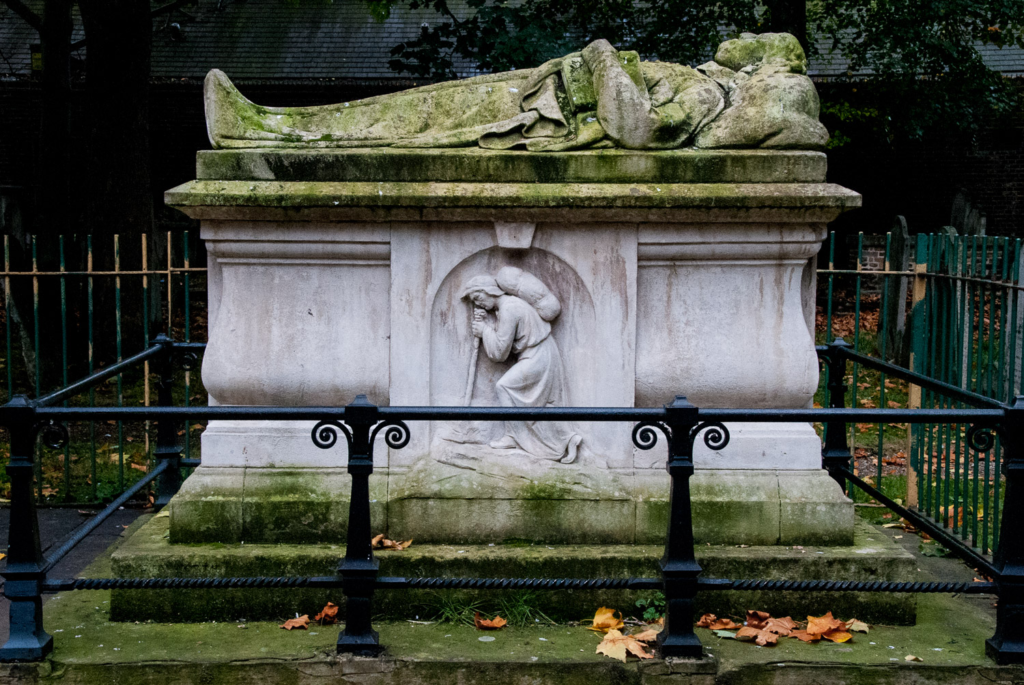
Bunyan spent more than ten years in prison for his beliefs and on one occasion Owen successfully negotiated his release.
This is the grave of Catherine (née Boucher; 1762 – 1831) the wife of the poet, painter, and engraver William Blake, and a vital presence and assistant throughout his life. Decorations have been laid on it by The William Blake Society …
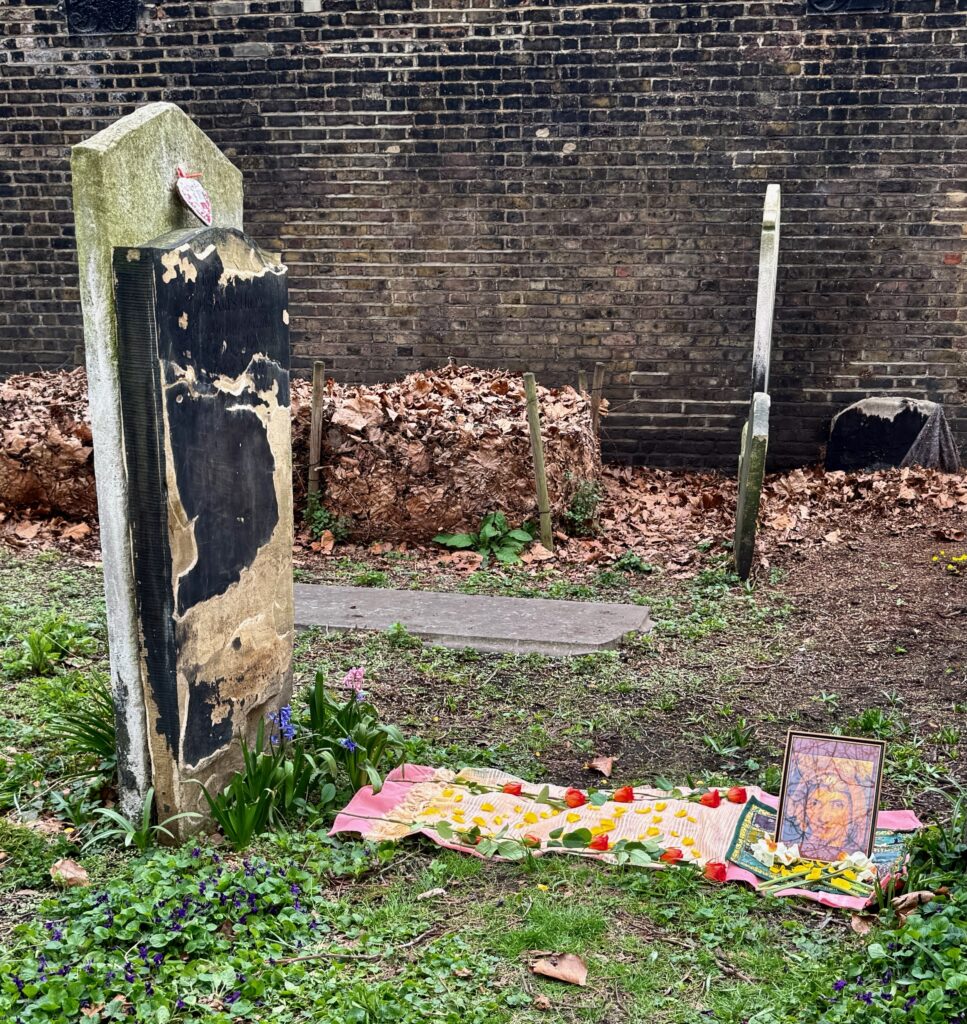
She was the pretty, illiterate daughter of an unsuccessful market gardener from the farm village of Battersea. Her family name suggests they were Huguenots who had fled religious persecution in France. It was a highly satisfactory marriage. Blake taught Catherine to read and write (a little), to draw, to colour his designs and prints, to help him at the printing press and to see visions as he did. She believed implicitly in his genius and his visions and supported him in everything he did with charming credulity. After his death she lived chiefly for the moments when, she said, he came to sit and talk with her.
William is buried elsewhere in Bunhill, outside the fenced area …
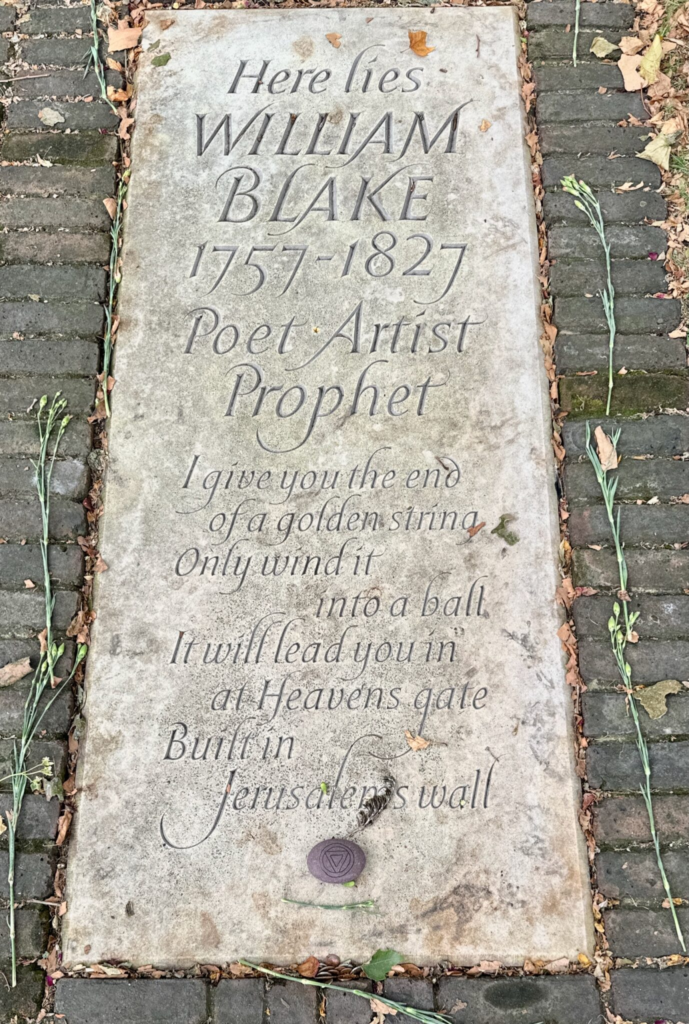
Catherine as drawn by William (circa 1805) …

This lady’s importance is reflected in the inscription on her gravestone …
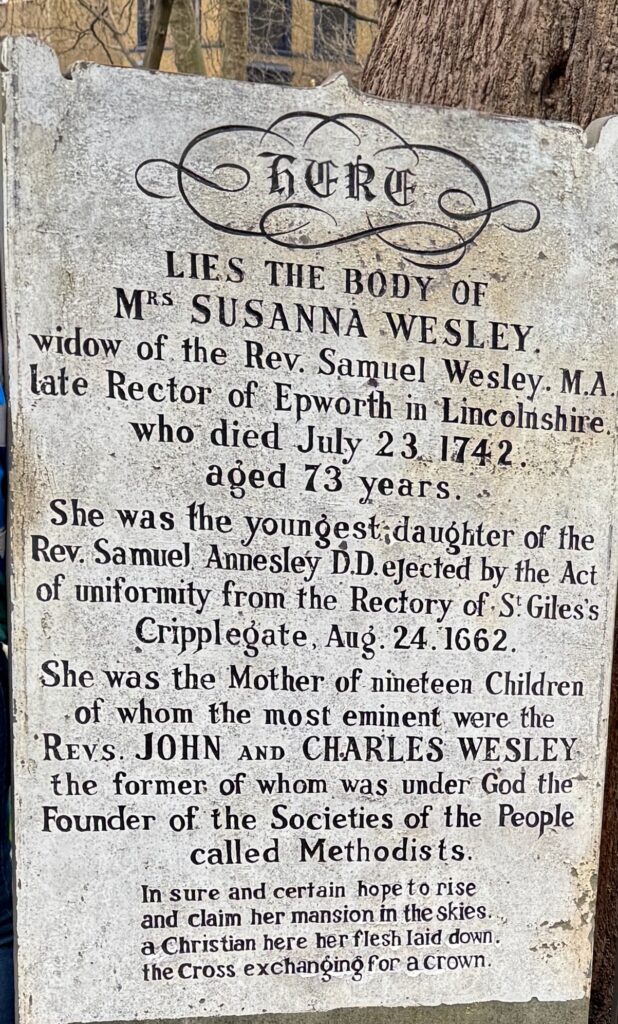
It differs somewhat from the stone in this image showing John visiting her grave in 1779 …
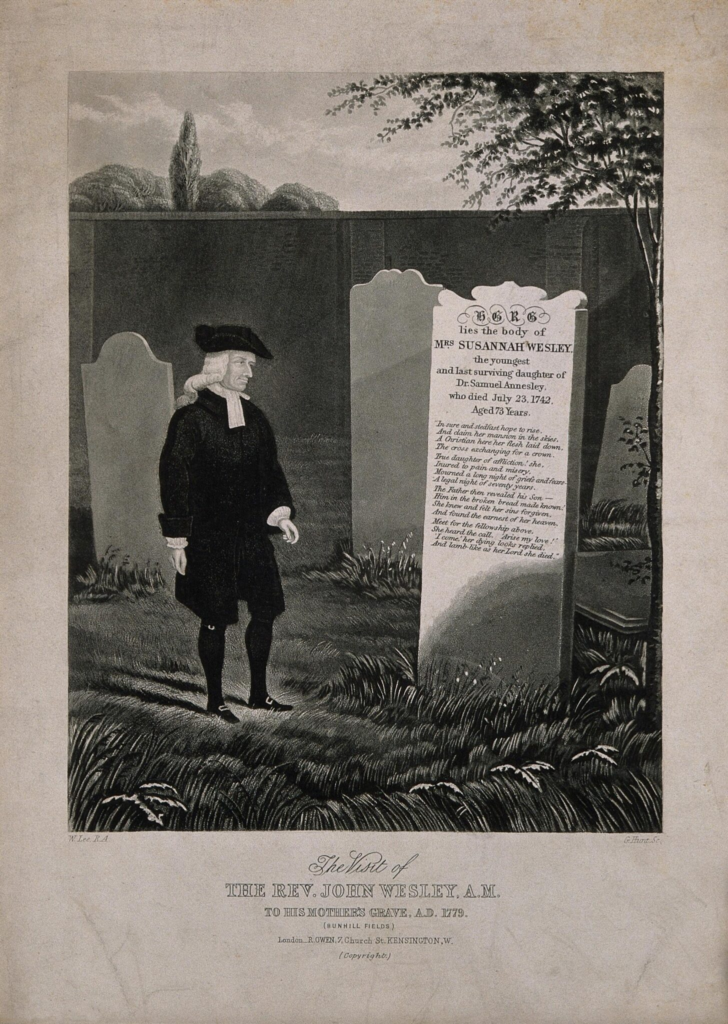
John Wesley was the founder of Methodism and his chapel and former home are across the road from Bunhill. He could see his mother’s grave from his bedroom on the top floor …

You can read more about my visit to his chapel here.
The large tomb at the centre of the photograph is the last resting place of Thomas Fowell Buxton of the famous Truman Hanbury Buxton brewery …
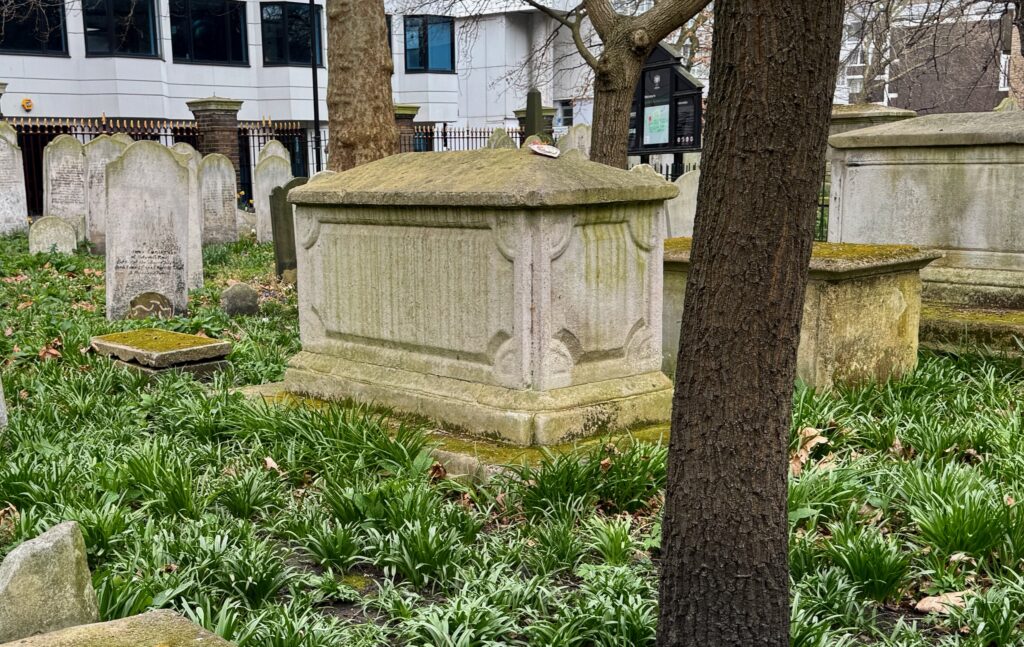
Sir Thomas Fowell Buxton, 1st Baronet Buxton of Belfield and Runton, was an English Member of Parliament, brewer, passionate abolitionist and social reformer. He married Hannah Gurney, whose sister became Elizabeth Fry, and was a great friend of her brother Joseph John Gurney and the extended Gurney family …

Buxton can be seen on the back of the (last ever) £5 note which commemorated Fry’s work with women prisoners. He is the tall gentleman with glasses standing with the group in Newgate Prison …

The engraving on which the note’s image is based …

It’s entitled Mrs Fry Reading to the Prisoners in Newgate, in the year 1816.
On the way out we passed this rather strange sunken tomb of the Pottenger family …

I have not been able to find out anything about the family but the tomb is Grade II listed. The official record gives the following information: The monument takes the form of a stone chest with a coped lid and moulded base, sunk within a rectangular brick-walled well about three feet deep. (This is said to represent the original ground level within the cemetery). The sides of the chest have incised panels bearing the names of various members of the Pottenger family. The two end panels read, respectively, ‘RICHARD POTTENGER’S Vault 1761’ and ‘The Within are Gone to Rest’.
Bunhill is always wonderful to visit, and we were accompanied for most of the way by the tap-tap-tapping of a resident woodpecker.
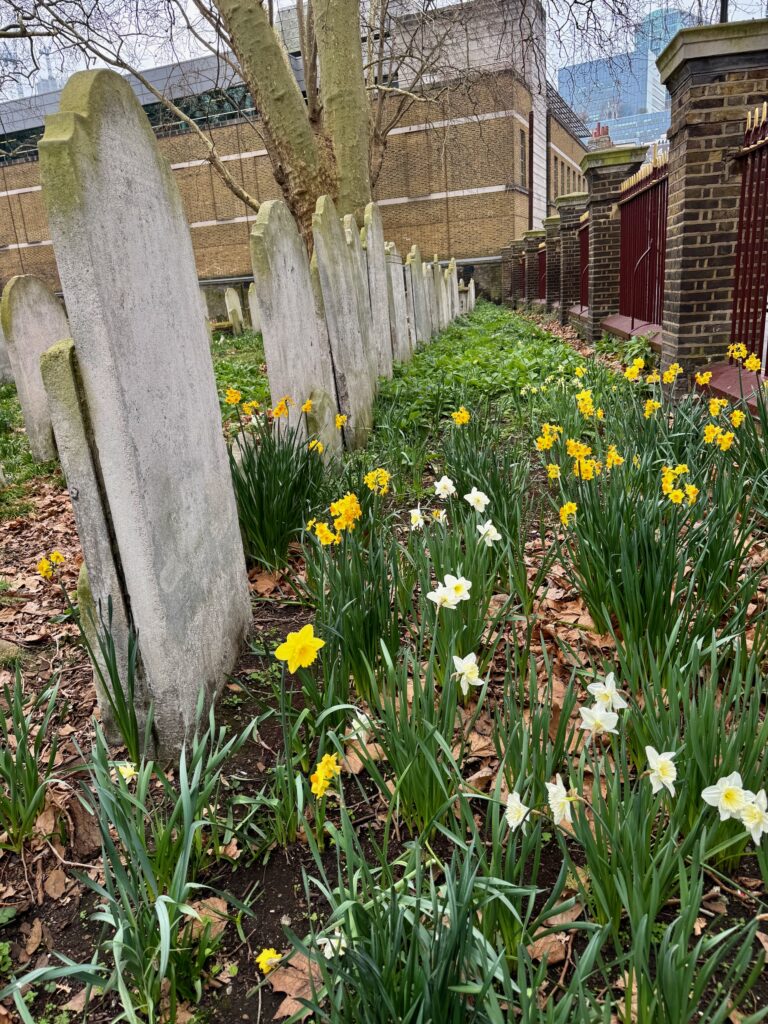
If you would like to follow me on Instagram here is the link …
